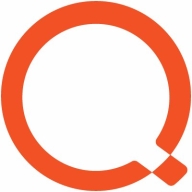

Quest Foglight for Databases and DbVisualizer are competitors in database management, with each having distinct strengths. Quest Foglight excels in performance monitoring, while DbVisualizer offers extensive query tools and multi-database management.
Features: Quest Foglight for Databases offers real-time monitoring, diagnostics, and performance optimization, effectively tackling bottlenecks. DbVisualizer provides extensive query tools, multi-database management capabilities, and a feature-rich environment for technical requirements.
Ease of Deployment and Customer Service: Quest Foglight for Databases stands out with easy deployment and a robust support framework for efficient setup. DbVisualizer focuses on an intuitive deployment process and usability, emphasizing straightforward service delivery. Quest Foglight is noted for extensive support, whereas DbVisualizer prioritizes ease of use for customers.
Pricing and ROI: Quest Foglight for Databases offers competitive costs, aimed at boosting ROI through enhanced monitoring. DbVisualizer has a flexible pricing structure, targeting long-term value with versatile features. Quest Foglight provides immediate ROI from performance benefits, whereas DbVisualizer's flexibility fosters cost efficiency over time.

One tool for all databases and OSes
DbVisualizer is the ultimate database tool for developers, analysts and DBAs. It runs on all major OSes and connects to all major databases.
Foglight identifies and resolves performance issues across your applications, databases and virtual environments. The Foglight family of products easily integrates with your existing tools, so you can monitor and analyze data from almost any source across your infrastructure and view it through a single interface with our customizable, unified monitoring platform
We monitor all Database Development and Management reviews to prevent fraudulent reviews and keep review quality high. We do not post reviews by company employees or direct competitors. We validate each review for authenticity via cross-reference with LinkedIn, and personal follow-up with the reviewer when necessary.